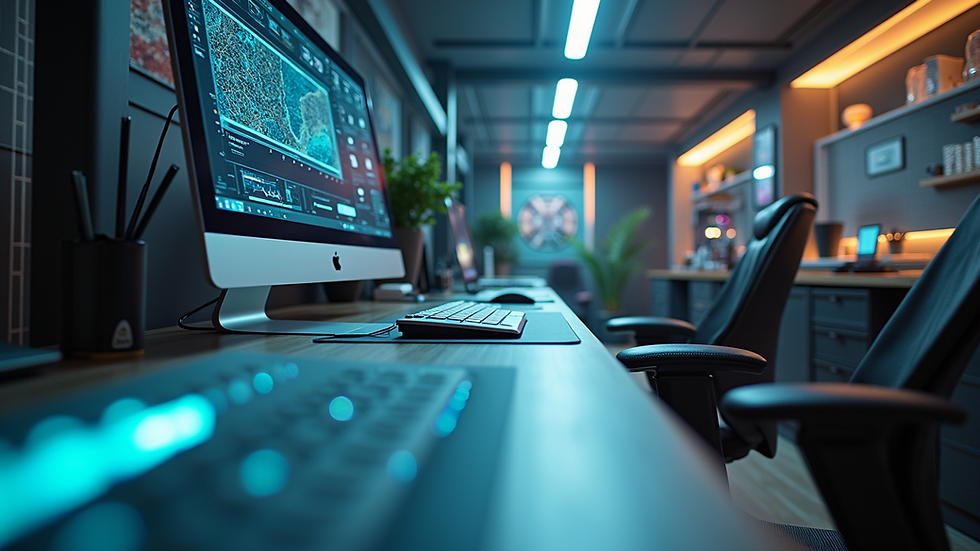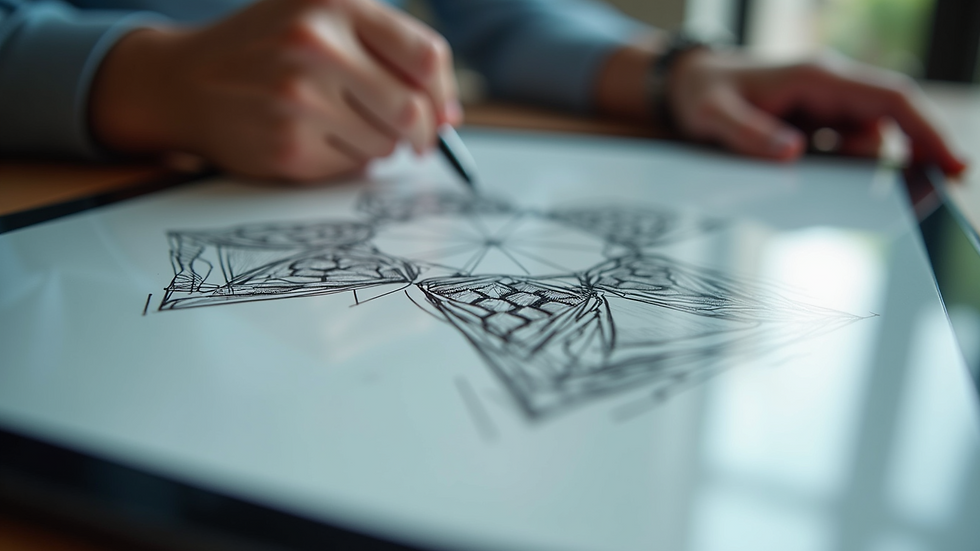The Future of Website Design: Merging AI and Human Creativity
- MasterStuff Official

- May 3
- 4 min read
Updated: May 11
The Role of AI in Website Design
AI is reshaping website design by automating routine tasks and enhancing user interactions. For example, AI algorithms analyze user behavior, providing personalized content that boosts engagement. Studies have shown that personalized web experiences can increase conversion rates by up to 20%.
With data-driven insights, AI helps designers create adaptive layouts that change based on user actions. Each visit can feel unique. This not only saves time but also creates designs that connect better with users.
Moreover, AI tools can generate tailored website templates. They also suggest color schemes, typography, and layouts. This empowers designers to focus on creativity instead of the technical details of web design.
Human Creativity in Website Design
While AI enhances efficiency, human creativity remains essential. Designers inject emotion and intuition into their work. They ensure websites are not just functional but also visually appealing and engaging. This creativity allows designers to tell stories. They create unique experiences that resonate deeply with users.
Consider how a travel website uses stunning imagery and personalized stories to draw users in. Understanding cultural nuances and aesthetic preferences is a skill that AI struggles to fully comprehend. An empathetic approach is crucial in effective design. The best websites are born from a combination of artistic vision and technical expertise.
The Symbiosis of AI and Human Creativity
The real magic of website design comes from the collaboration between AI and human creativity. While AI excels at analyzing data and automating tasks, designers interpret these insights through their creative lens. This powerful collaboration leads to faster design processes. It results in unique and user-centered websites.
For example, AI can assist in A/B testing various design elements to determine which ones drive higher engagement. Designers can then analyze this data. They infuse their creativity into refining the options. This continuous improvement based on real user feedback ultimately creates better online experiences.
Challenges and Considerations
Despite the benefits of AI and human collaboration in web design, some challenges must be addressed. A significant concern is determining how much control AI should have in the design process. As AI technology evolves, the fear of overshadowing human creativity can lead to resistance in the industry.
Additionally, data privacy and security issues become critical as we increasingly rely on AI. Designers must handle user data responsibly. Ensuring compliance with regulations while protecting user rights is essential.
The Role of Emerging Technologies
Looking ahead, emerging technologies like virtual reality (VR) and augmented reality (AR) will enhance the blend of AI and human creativity in web design. These innovations can create immersive experiences. They engage users in ways we previously thought impossible.
Imagine a website that not only conveys information but also immerses users in a 3D interactive environment. With these tools, designers can break free from conventional structures. They can explore fresh avenues to connect with users.
Machine learning advancements will also make AI more predictive. This means AI can help designers anticipate user needs and preferences even before they are expressed. As this technology matures, the partnership between AI and human creativity will deepen. This will lead to remarkable innovations in web design.

The Future Vision
The future of website design will likely be characterized by seamless integration between AI and human creativity. This synergy will redefine how websites are built. It will drive more personalization, efficiency, and user engagement.
As designers embrace AI tools, we can expect to see a wave of creativity. Technology will serve as an assistant rather than a replacement. In this environment, creativity will be the heart of meaningful user experiences. Meanwhile, AI will empower designers to work smarter.
Furthermore, ongoing education and training will be crucial for both designers and developers. Effectively utilizing AI tools while preserving human creativity will be at the core of successful web design skills.
Practical Applications of AI in Web Design
Integrating AI into web design offers numerous practical applications. Chatbots are among the most prevalent. They provide instant support and enhance user interaction on websites. This tool improves customer service and can guide users seamlessly through their experience.
Another application is predictive analytics. This technology enables designers to adjust their website content based on anticipated user behavior. It leads to a highly customized experience, ultimately increasing user satisfaction.
AI can also assist in accessibility improvements. By monitoring user interactions, it identifies elements that may present challenges for users with disabilities. Designers can use this feedback to make necessary adjustments, ensuring their websites are accessible to everyone.
Final Thoughts
The merging of AI and human creativity represents a crucial shift in website design. By harnessing AI’s capabilities and leveraging human ingenuity, designers can create websites that are not only visually stunning but also highly relevant to user needs. Navigating this dynamic landscape requires understanding, adaptation, and a continuous commitment to creativity and innovation.
In conclusion, those who master this balance will thrive in the evolving digital landscape. As the industry advances, the capacity to merge AI and human creativity will shape a future for website design that is both surprising and extraordinary.




Comments